
XBOX GPU, an inside look.

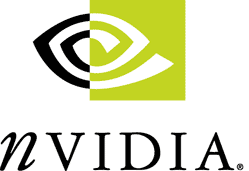

GeForce 3: The Infinite Effects GPU
The new Nvidia GPU, the Geforce 3 (otherwise known as the NV20 or the XBOX GPU) is the most advanced processor ever built. It has 57 million transistors (more than twice the number of its predecessor) on a new .15-micron process. For perspective, the Pentium IV has 42 millions transistors on a .18-micron manufacturing process.
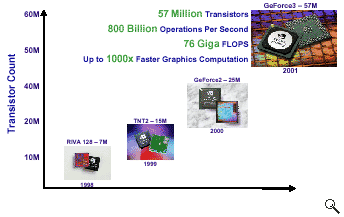
Powered by the new NVIDIA nfiniteFX™ engine and the Lightspeed Memory Architecture™,
the GeForce3 is the first fully programmable GPU and can achieve High Resolution Antialiasing.
What is the nfiniteFX™
engine?
It's a new technology at the video core that enables the GPU's programmability
(and its multitude of effects). It's composed of the Vertex Shaders processor
and the Pixel Shaders processor.
The two technologies aren't competing technologies. To the contrary, the two
techniques are designed to complement each other to create ultra realistic graphics.
But first, what is a shader? It's a program routine that, like a texture map,
runs on every pixel in a game's scene.
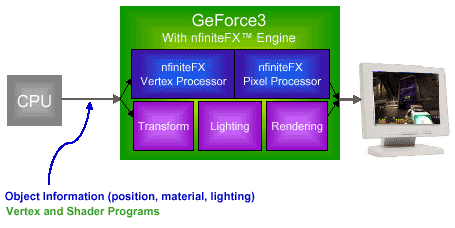
Vertex Shaders:
Inject personality into characters and environments. Motion invades the entire
scene, not just the focal points. Vertex processing allows characters detailed
movement and facial emotion. By customizing the skinning and motion effects
developers can create a character's personality, intensifying the impact of
the visualization or animation.




An example of Vertex Shaders
is the Facial Animation of the new Doom engine

here you can see bones manipulating
vertexs (corner of the triangle where two edges meet) in order to achieve these:
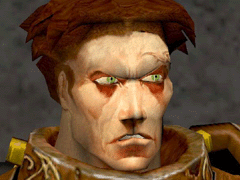
Another example
is this sequence Nvidia showed in a private meeting:
 The wave effect
was done by the GPU, not by the CPU.
The wave effect
was done by the GPU, not by the CPU.
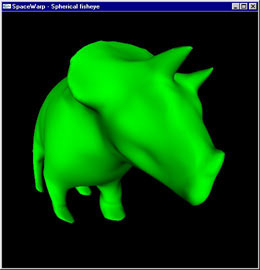 the new fish eye
lens effect
the new fish eye
lens effect
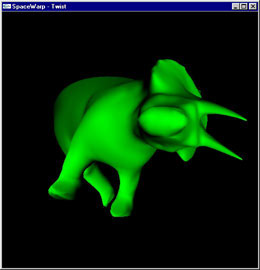
Imagine this effect in say, a first person shooter, when you use some sort of
detailed player reaction programmatically to produce a specific special response.
Pixel Shaders:
"How many polygons
do you think the T-Rex in the movie Jurasic Park was made of?" Seamus
Blackley asked once. Millions, we figure. "Yeah, everyone always thinks
it was millions of polygons, but it only had about 74,000. The reason it looked
so good is because the artist used shaders"
Pixel shaders create ambiance with materials and surfaces that mimic reality.
An infinite number of material effects replace the artificial, computerized
look with high-impact organic surfaces. By altering the lighting and surface
effects, artists are able to manipulate colors, textures, or shapes to generate
complex, realistic scenes.
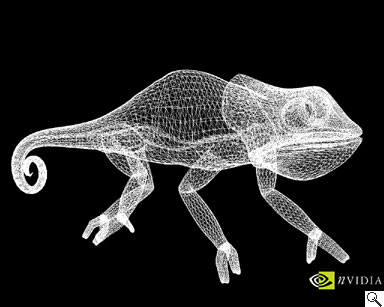
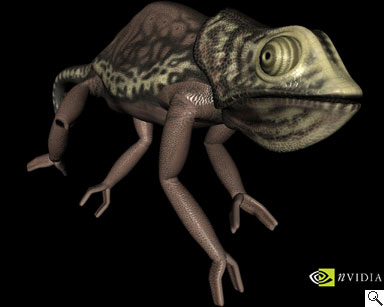

What is Lightspeed Memory
Architecture™?
In short, Lightspeed Memory Architecture™ is High Performance, High
Resolution, High Quality while also improving memory efficiency.
The system bottleneck that limits the performance of most 3D games at higher resolution, such as 1024 x 768 x 32bit, is the memory bandwidth of video card. We knew that GeForce 3 was coming with same memory of the GeForce 2 which raised a number of questions. How, with the same memory bandwidth and lower video core speed of its predecessor, could the GeForce3 have superior performance? Why would Microsoft decide to downgrade the GPU speed from 300Mhz to 250 Mhz and then say that it would mantain the same performance? Why continue to use 200 Mhz DDR memory if faster memory are available on the market?
Well, the answers to all of these questions are "Lightspeed Memory Architecture™"
Lightspeed Memory Architecture™ improves memory efficiency up to 400% more than the Geforce 2! So it doesn't matter the GPU core speed, you won't achieve better results upgrading its Mhz if the memory is limiting that power.
Lightspeed Memory Architecture™ is also why you don't have to worry about the Xbox GPU being downgraded to 250 Mhz because even with 300Mhz you will still get the same performance. In comparision, the 733MHz Intel Pentium 3 CPU in the XBOX allows for better Artificial Intelligence in games, and it's faster than the other Intel PIII CPUS because it's in a smaller chip and actually has a much larger bandwidth available to it. Remember though however, that the GPU does the graphics work, leaving the Intel CPU avaiable for things like AI and core code execution in the small Windows 2000 kernel.
High-Resolution Antialiasing (HRAA)
Thanks to the Multisample achitecture and its Quincunx AA mode, High Resolution Anti Aliasing (HRAA) can be achieved with high quality AA samples at 4X the performance of a GF2. In the practice, now you can play Quake III at 1024 x 768 x 32bit running at 70fps+. Please read my "Human Eyes Frames Per Second" article for information on how this new GPU relates to the actual FPS Human Eyes can perceive.

As for how all of this concerns the Xbox, this is why you can play on an HDTV with the same performance as you could on a regular TV, or another computer display.
Conclusion:
The GeForce 3 is the first fully programmable GPU that, thanks to the nfiniteFX(TM)
Pixel Shader processor and Vertex Shader processor, gives developers the ability
to program a virtually infinite number of special effects and custom looks.
Also, the GeForce 3 is the first high-resolution antialiasing (HRAA) GPU, featuring
NVIDIA's patented Quincunx AA mode, for high-resolution, high-quality, high-performance
multisampling capabilities.
In games, this means that every developer can give their games its own look.
From the dark corridors of the DOOM 3 engine demo, to toon styles games and to
the realistic environments found in Halo, Malice or Munch' Oddysee.
And remember, the Geforce 3 is only the core technology inside the Xbox. The
NV2A is supposed to be even more powerful and has been compared to the so-called
NV25 and NV30.
Check out the DOOM 3 Engine demo, which is still in it's early stages which utilizes the XBOX GPU. Yes DOOM 3 is going to be on the XBOX without a doubt.
Article written by Dustin D. Brand on 03-01-01 March 1, 2001
Thanks Nvidia for the information.
NfiniteFX engine for full programmability
Lightspeed Memory Architecture for unmatched performance
Surface engine for high order surfaces and patches
Programmable Vertex Shader
Fog effects
Lens effects
Programmable Pixel Shader
HRAA--high resolution antialiasing
Integrated hardware transform engine
Integrated hardware lighting engine
DirectX and S3TC texture compression
Dual cube environment mapping capability
Hardware accelerated realtime shadows
True, reflective bump mapping
High performance 2D rendering engine
High quality HDTV/DVD playback
Operating Systems:
API support:
Performance:
Compatibility: